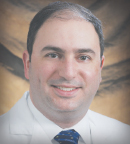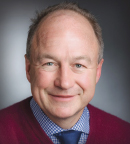The 2022 American Society of Hematology (ASH) Annual Meeting and Exposition was full of interesting abstracts in multiple myeloma. In addition to full coverage of several important presentations, The ASCO Post offers readers quick takes on some studies that could be practice-changing and others that herald the emergence of yet more novel therapies in this ever-evolving treatment landscape.
Tocilizumab Pretreatment Markedly Reduces Cytokine-Release Syndrome
Cytokine blockade with tocilizumab before receipt of bispecific antibodies may be a way to preempt this concerning side effect. Patients pretreated with tocilizumab before receiving cevostamab were significantly less likely to develop cytokine-release syndrome, according to a study reported by Suzanne Trudel, MD, of Princess Margaret Cancer Centre and the University of Toronto, Canada.1

Suzanne Trudel, MD
“Importantly, tocilizumab pretreatment had no apparent negative impact on the antimyeloma activity of cevostamab,” she said. In fact, the response rate to cevostamab was 54.8% in the tocilizumab-pretreated group and 37.2% in the nonpretreated group, with very good partial responses or better in 32.3% and 25.6%, respectively.
“Tocilizumab pretreatment may play an important future role in mitigation strategies for cytokine-release syndrome that have the potential to enable outpatient administration of bispecific antibodies,” she said.
The phase I study of patients with relapsed or refractory disease evaluated the benefit of a single 8-mg/kg dose of tocilizumab given with the first dose of cevostamab in 31 patients. Patient data from 44 previously enrolled nonpretreated patients served as a retrospective comparator in the nonrandomized study.
On day 1, patients received tocilizumab plus cevostamab at 3.6 mg; the dose of cevostamab was increased thereafter to 90 mg on day 1 for 17 cycles. This one dose of tocilizumab was expected to maintain more than 99% receptor occupancy for 3 to 4 weeks, she said, and this seemed to be the case.
The overall rate of cytokine-release syndrome was significantly lower in the tocilizumab pretreatment group than in the nonpretreated group: 38.7% vs 90.9%, respectively, for all grades; 35.5% and 88.6% for grade 1 or 2; and 3.2% and 2.3% for grade 3. In both cohorts, the incidence decreased with each step dose, Dr. Trudel reported.
“This effect is likely achieved via suppression of the interleukin-6 signaling pathway,” she maintained. T-cell–dependent bispecific antibodies mediate rapid elevation in interleukin-6 after dosing. Peak levels after the step dose were significantly higher in the pretreated group due to tocilizumab-mediated reduction in interleukin-6 clearance. There was, however, “near complete suppression” of interleukin-6–mediated C-reactive protein (a downstream marker of inflammation), “suggesting that despite higher levels of interleukin-6, the drug blocked interleukin-6 signaling,” she said.
Dexamethasone-Sparing Regimen Safe and Effective in Elderly Patients
In the phase III IFM2017-03 trial, the first randomized trial dedicated to frail patients with newly diagnosed myeloma, a dexamethasone-sparing regimen combining daratumumab and lenalidomide demonstrated deep and rapid responses and a favorable safety profile, according to Salomon Manier, MD, PhD, of Lille University Hospital, France.2

Salomon Manier, MD, PhD
“Daratumumab/lenalidomide was superior to lenalidomide/dexamethasone in terms of objective response rates, rates of very good partial response or better, and rates of MRD [measurable residual disease] negativity, and rapid responses were obtained,” Dr. Manier said. “The safety profile was also favorable, without increased infection or pneumonia rates and similar rates of treatment discontinuation. These preliminary data on a dexamethasone-sparing strategy for frail patients are encouraging.”
IFM2017-03 randomly assigned 295 patients 2:1 to daratumu-mab/lenalidomide (with weekly dexamethasone only given for the first two cycles) or lenalidomide/dexamethasone. Approximately 84% of patients were aged 70 and older, and approximately 60% were at least 80.
Objective responses were observed in 96% of the daratumu-mab/lenalidomide arm and 85% of the lenalidomide/dexamethasone arm (P = .001). The rate of very good partial response or better was 64% and 43%, respectively, and “deeper responses were obtained with daratumumab/lenalidomide at all time points, including at early time points,” he noted. At 4 months, very good partial responses or better were documented for 41% vs 26%, respectively, which increased to 71% vs 55% by month 12.
For the various frailty scores, odds ratios ranged from 0.38 to 0.52 favoring daratumumab/lenalidomide. In patients with high-risk cytogenetics, the odds ratio was 0.19.
There were significantly more hematologic adverse events in the daratumumab/lenalidomide arm but no increase in infections. Treatment discontinuation due to adverse events was observed in 27% and 15%, respectively (P = .65).
Novel Agent Modakafusp Alfa Looks Active
In preliminary findings from a first-in-human phase I/II trial, the immune-targeting attenuated cytokine modakafusp alfa showed single-agent activity in relapsed/refractory disease, producing responses in 43% of heavily pretreated patients, according to Dan T. Vogl, MD, of the Hospital of the University of Pennsylvania and Abramson Cancer Center at the Perelman School of Medicine.3

Dan T. Vogl, MD
Modakafusp alfa is a first-in-class, innate immunity enhancer that functions through targeted next-generation interferon signaling. It binds with high affinity to a unique epitope of CD38, and by signaling through the interferon-alfa receptor, it activates innate and adaptive immune cells and elicits direct antiproliferative/apoptotic signals in tumor cells.
“Modakafusp alfa has a truly novel mechanism of action, delivering a hormonal signal directly to target cells that simultaneously is toxic to cancer cells while stimulating an immune response. We saw responses in patients whose cancer did not respond to or who experienced a relapse after receiving anti-CD38 antibody drugs … and in patients whose myeloma had developed resistance to all currently available effective therapies … which is very impressive.”
The study included 100 patients with relapsed or refractory myeloma. Responses were observed regardless of prior therapies or refractory status. At a dose of 1.5 mg/kg every 4 weeks, responses were observed in 43% of all patients, 39% of patients refractory to anti-CD38 antibodies, and 27% of patients exposed to agents targeting B-cell maturation antigen (BCMA). Among the 13 responders, median duration of response was 12.5 months. Of three patients evaluated for MRD status, one achieved MRD negativity.
Adverse events were primarily hematologic, mostly thrombocytopenia (all grades, 75%), neutropenia (63%), leukopenia (63%), and anemia (63%).
Dr. Vogl and his colleagues are currently enrolling patients into an extension phase to define the optimal single-agent dose.
Anti-BCMA CAR T-Cell Produced by NEX-T Process
An investigational chimeric antigen receptor (CAR) T-cell product targeting BCMA and manufactured under the novel NEX-T process has produced robust responses in heavily pretreated patients, according to Luciano J. Costa, MD, of the University of Alabama at Birmingham.4
The NEX-T process was designed to shorten the manufacturing time, improve the potency and phenotypic attributes of CAR T cells, and enhance the depth and durability of response. CC-98633/BMS-986354 contains the same fully human CAR T-cell construct as orvacabtagene autoleucel, an investigational BCMA-directed CAR T-cell therapy with a fully human binder.

“Deep and durable responses were observed across all dose levels of BMS-986354 in patients with heavily pretreated relapsed/refractory myeloma.”— Luciano J. Costa, MD
Tweet this quote
Compared with orvacabtagene autoleucel, BMS-986354 is a less differentiated cellular drug product with increased cytokine production. In the study, it demonstrated about a 10-fold greater proliferative capacity and robust cellular expansion at dose level 2, he said.
The dose-finding study of CC-98633/BMS-986354 enrolled 61 heavily pretreated patients. The overall response rate was 95.1%, and of these responses, 62.3% were very good partial responses or better; responses were ongoing at a median of 9 months’ follow-up for 38 patients. Of 38 patients with known MRD status, 25 achieved MRD negativity.
“Deep and durable responses were observed across all dose levels of BMS-986354 in patients with heavily pretreated relapsed/refractory myeloma. And the majority of cytokine-release syndrome and neurotoxicity events were low-grade, short in duration, and reversible,” he said.
The findings from this study and others using the NEX-T manufacturing process will be applied to future CAR T-cell programs, according to Dr. Costa.
CELMoD Mezigdomide Is Active in Triple-Refractory Disease
The novel, oral cereblon E3 ligase modulator (CELMoD) mezigdomide (CC-92480) has demonstrated notable clinical activity in patients with triple-class–refractory myeloma, including patients with prior BCMA-targeted therapies and with plasmacytoma, reported Paul G. Richardson, MD, of Dana-Farber Cancer Institute, Boston.5

Paul G. Richardson, MD
Mezigdomide has enhanced tumoricidal and immune-stimulatory effects compared with immunomodulatory agents. It was designed for maximal degradation of target proteins, including Ikaros and Aiolos (transcription factors playing a key role in the development and differentiation of hematopoietic cells as well as myeloma pathobiology). These features lead to increased apoptosis in myeloma cells and immune stimulation, Dr. Richardson explained.
Mezigdomide was evaluated in a phase I/II trial alone or in combination with dexamethasone in 101 patients with relapsed or refractory disease who were at least triple-class–refractory; 30% had received anti-BCMA therapy. Dr. Richardson reported the results for the dose-expansion cohort who received the combination of mezigdomide at 1 mg on days 1 to 21 plus dexamethasone at 40 mg weekly on 28-day cycles.
The objective response rate was 40.6% overall, 50.0% in patients with prior BCMA-targeted therapies, and 30.0% in patients with extramedullary disease, including soft-tissue alone and soft-tissue bone-related plasmacytoma, “which we thought was particularly striking,” he commented. “We saw high-quality responses, including complete and stringent complete responses (5.0%) and very good partial responses (19.8%).”
At this early time point, median duration of response was 5.1 months overall and 9.2 months in patients with a very good partial response or better. Median progression-free survival (immature) is 4.4 months.
Treatment-emergent adverse events were predominantly hematologic and dominated by neutropenia (75.3% grade 3 or 4). “These events generally proved very manageable with growth factor support, dose interruption, and dose reduction,” he said. Pneumonia grade 3 or 4 was observed in 15.5%. “Very importantly, few patients (5.9%) discontinued treatment due to adverse events,” he added.
“We did a comprehensive correlative assessment, which showed mezigdomide to be pharmacodynamically active in patients who were refractory to pomalidomide or had received pomalidomide in their last regimen,” Dr. Richardson added.
DISCLOSURE: Dr. Trudel has received honoraria from or has served as a consultant to Takeda, Sanofi, Janssen, AstraZeneca, Karyopharm, Pfizer, Amgen, Roche, Bristol Myers Squibb, GlaxoSmithKline, and Forus. Dr. Manier has served as a consultant to AbbVie, Adaptive Biotechnology, Amgen, Celgene/BMS, GlaxoSmithKline, Janssen, Novartis, Oncopeptide, Regeneron, Roche, and Takeda. Dr. Vogl has served as a consultant to Karyopharm CSL/Behring, Sanofi/Genzyme, GlaxoSmithKline, Takeda, and Oncopeptides; and has received research funding from Takeda and Active Biotech. Dr. Costa has received honoraria from, or served as a consultant to, Adaptive Biotechnologies, Bristol Myers Squibb, Janssen, Sanofi, and Amgen. Dr. Richardson has served as a consultant to Regeneron, GlaxoSmithKline, Secura Bio, Protocol Intelligence, AstraZeneca, AbbVie, Celgene/BMS, Takeda, Karyopharm, Sanofi, and Oncopeptides.
REFERENCES
1. Trudel S, Bahlis N, Spencer A, et al: Pretreatment with tocilizumab prior to the CD3 bispecific cevostamab in patients with relapsed/refractory multiple myeloma showed a marked reduction in cytokine release syndrome incidence. 2022 ASH Annual Meeting and Exposition. Abstract 567. Presented December 11, 2022.
2. Manier S, Corre J, Hulin C, et al: A dexamethasone-sparing regimen with daratumumab and lenalidomide in frail patients with newly diagnosed multiple myeloma: Efficacy and safety analysis of the phase 3 IFM2017-03 trial. 2022 ASH Annual Meeting and Exhibition. Abstract 569. Presented December 11, 2022.
3. Vogl DT, Atrash S, Holstein SA, et al: Final results from the first-in-human phase 1/2 study of modakafusp alfa, an immune-targeting attenuated cytokine, in patients with relapsed/refractory multiple myeloma. 2022 ASH Annual Meeting and Exposition. Abstract 565. Presented December 11, 2022.
4. Costa LJ, Kumar S, Atrash S, et al: Results from the first phase I clinical study of the B-cell maturation antigen NEX-T chimeric antigen receptor T cell therapy CC-98633/BMS-986354 in patients with relapsed/refractory multiple myeloma. 2022 ASH Annual Meeting and Exposition. Abstract 566. Presented December 11, 2022.
5. Richardson PG, Trudel S, Quach H, et al: Mezigdomide (CC-92480), a potent, novel cereblon E3 ligase modulator, combined with dexamethasone in patients with relapsed/refractory multiple myeloma: Preliminary results from the dose-expansion phase of the CC-92480-MM-001 trial. 2022 ASH Annual Meeting and Exposition. Abstract 568. Presented December 11, 2022.

